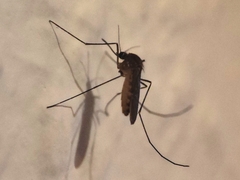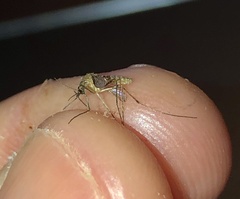©taos, some rights reserved (CC-BY-NC)
©rqy-yong, some rights reserved (CC-BY-NC-ND)
©rqy-yong, some rights reserved (CC-BY-NC-ND)
©U. Wilkens, some rights reserved (CC-BY-NC)
©U. Wilkens, some rights reserved (CC-BY-NC)
©U. Wilkens, some rights reserved (CC-BY-NC)
©Claude Kolwelter, some rights reserved (CC-BY)
©Claude Kolwelter, some rights reserved (CC-BY)
©Иван Матершев, some rights reserved (CC-BY-NC)
©Иван Матершев, some rights reserved (CC-BY-NC)
©Иван Матершев, some rights reserved (CC-BY-NC)
©laziphotos, some rights reserved (CC-BY-NC)
©William, some rights reserved (CC-BY)
©Coby Meester, some rights reserved (CC-BY-NC)
©Coby Meester, some rights reserved (CC-BY-NC)
©Иван Мазаев, some rights reserved (CC-BY-NC)
©alizarine01, some rights reserved (CC-BY-NC)
©Erdi, some rights reserved (CC-BY-NC)
©Erdi, some rights reserved (CC-BY-NC)
©Erdi, some rights reserved (CC-BY-NC)
©Erdi, some rights reserved (CC-BY-NC)
©Erdi, some rights reserved (CC-BY-NC)
©Erdi, some rights reserved (CC-BY-NC)
©Christian Widmann, some rights reserved (CC-BY-NC)
©Christian Widmann, some rights reserved (CC-BY-NC)
©carljamesknight, some rights reserved (CC-BY-NC)
©missoum73, some rights reserved (CC-BY-NC)
©Steve, some rights reserved (CC-BY-NC)
©Calum McLennan, some rights reserved (CC-BY-NC)
©Pieter Prins, some rights reserved (CC-BY-NC)
©Pieter Prins, some rights reserved (CC-BY-NC)
©余世文, some rights reserved (CC0)
©Татьяна Абазова, some rights reserved (CC-BY-NC)
©Татьяна Абазова, some rights reserved (CC-BY-NC)
©Татьяна Абазова, some rights reserved (CC-BY-NC)
©Pieter Prins, some rights reserved (CC-BY-NC)
©Pieter Prins, some rights reserved (CC-BY-NC)
©Pieter Prins, some rights reserved (CC-BY-NC)
©Pieter Prins, some rights reserved (CC-BY-NC)
©Leslie Flint, some rights reserved (CC-BY-NC)
©Leslie Flint, some rights reserved (CC-BY-NC)
©Vijay Anand Ismavel, some rights reserved (CC-BY-NC)
©Koray Öğreten, some rights reserved (CC-BY-NC)
©laureny35, some rights reserved (CC-BY-NC)
©laureny35, some rights reserved (CC-BY-NC)
©laureny35, some rights reserved (CC-BY-NC)
©amara_starleaf, some rights reserved (CC-BY-NC)
©Fabio Cianferoni, some rights reserved (CC-BY-NC)
©Dr. Juan Carlos Olivo Escudero, some rights reserved (CC-BY-NC)
©Dr. Juan Carlos Olivo Escudero, some rights reserved (CC-BY-NC)
©Dr. Juan Carlos Olivo Escudero, some rights reserved (CC-BY-NC)
©Aaron Iemma, some rights reserved (CC0)
©زين _النجم, some rights reserved (CC-BY-NC)
©زين _النجم, some rights reserved (CC-BY-NC)
©زين _النجم, some rights reserved (CC-BY-NC)
©Eddi Bisulli, some rights reserved (CC-BY-NC)
©زين _النجم, some rights reserved (CC-BY-NC)
©Edoardo Bompiani, some rights reserved (CC-BY-NC)
©jqadams, some rights reserved (CC-BY-NC)
©jqadams, some rights reserved (CC-BY-NC)
©David, some rights reserved (CC-BY-NC)
©Jessica Peruzzo, some rights reserved (CC-BY-NC-ND)
©螯蝦, some rights reserved (CC0)
©螯蝦, some rights reserved (CC0)
©螯蝦, some rights reserved (CC0)
©螯蝦, some rights reserved (CC0)
©螯蝦, some rights reserved (CC0)
©螯蝦, some rights reserved (CC0)
©螯蝦, some rights reserved (CC0)
©螯蝦, some rights reserved (CC0)
©螯蝦, some rights reserved (CC0)
©螯蝦, some rights reserved (CC0)
©螯蝦, some rights reserved (CC0)
©螯蝦, some rights reserved (CC0)
©螯蝦, some rights reserved (CC0)
©螯蝦, some rights reserved (CC0)
©螯蝦, some rights reserved (CC0)
©螯蝦, some rights reserved (CC0)
©螯蝦, some rights reserved (CC0)
©螯蝦, some rights reserved (CC0)
©nagelhoutandre, some rights reserved (CC-BY-NC)
©ricky_gaez, some rights reserved (CC-BY-NC)
©Rob Palmer, some rights reserved (CC-BY-NC-SA)
©Damiano Oldoni, some rights reserved (CC0)
©romanvrbicek, some rights reserved (CC-BY-NC)
©Monica, some rights reserved (CC-BY-NC)
©koccenka, some rights reserved (CC-BY-NC)
©koccenka, some rights reserved (CC-BY-NC)
©koccenka, some rights reserved (CC-BY-NC)
©koccenka, some rights reserved (CC-BY-NC)
©aurorabeluffi_, some rights reserved (CC-BY-NC)
©aurorabeluffi_, some rights reserved (CC-BY-NC)
©mephi, some rights reserved (CC-BY-NC)
©mephi, some rights reserved (CC-BY-NC)
©Paulius Rupšas, some rights reserved (CC-BY)
©Paulius Rupšas, some rights reserved (CC-BY)
©Arian, some rights reserved (CC-BY-NC)
©Arian, some rights reserved (CC-BY-NC)
©mjan4, some rights reserved (CC-BY-NC)
©fb31, some rights reserved (CC-BY-NC)
©fb31, some rights reserved (CC-BY-NC)
©bja2800dk, some rights reserved (CC-BY-NC)
©Alexis, some rights reserved (CC-BY)
©stefano02, some rights reserved (CC-BY-NC)
©Paulius Rupšas, some rights reserved (CC-BY)
©Paulius Rupšas, some rights reserved (CC-BY)
©Paulius Rupšas, some rights reserved (CC-BY)
©Paulius Rupšas, some rights reserved (CC-BY)
©Fernando Pérez, some rights reserved (CC-BY-NC)
©Fernando Pérez, some rights reserved (CC-BY-NC)
©Fernando Pérez, some rights reserved (CC-BY-NC)
©Fernando Pérez, some rights reserved (CC-BY-NC)
©Fernando Pérez, some rights reserved (CC-BY-NC)
©Daniel Alexander Carrillo Mtz, some rights reserved (CC-BY-NC)
©Daniel Alexander Carrillo Mtz, some rights reserved (CC-BY-NC)
©Daniel Alexander Carrillo Mtz, some rights reserved (CC-BY-NC)
©Daniel Alexander Carrillo Mtz, some rights reserved (CC-BY-NC)
©Mattia, some rights reserved (CC-BY-NC)
©Mattia, some rights reserved (CC-BY-NC)
©Peter, some rights reserved (CC-BY-NC)
©Peter, some rights reserved (CC-BY-NC)
©snsergeevna, some rights reserved (CC-BY-NC)
©Татьяна Абазова, some rights reserved (CC-BY-NC)
©Татьяна Абазова, some rights reserved (CC-BY-NC)
©茶棚, some rights reserved (CC-BY-NC)
©ellenier, some rights reserved (CC-BY-NC)
©Fabián, some rights reserved (CC-BY-NC)
©Fabián, some rights reserved (CC-BY-NC)
©Fabián, some rights reserved (CC-BY-NC)
©Lorenzo, some rights reserved (CC-BY-NC)
©nikita_borzov, some rights reserved (CC-BY-NC)
©nikita_borzov, some rights reserved (CC-BY-NC)
©nikita_borzov, some rights reserved (CC-BY-NC)
©Chaudhary Asad Jamil, some rights reserved (CC-BY-NC)
©Chaudhary Asad Jamil, some rights reserved (CC-BY-NC)
©Гульгина Гайнетдинова, some rights reserved (CC-BY-NC)
©Laura, some rights reserved (CC-BY-NC)
©rota_alessandro_2, some rights reserved (CC-BY-NC)
©Константин, some rights reserved (CC-BY-NC)
©Константин, some rights reserved (CC-BY-NC)
©em391696, some rights reserved (CC-BY-NC)
©yara1401, some rights reserved (CC-BY-NC)
©michi100, some rights reserved (CC-BY-NC)
©michi100, some rights reserved (CC-BY-NC)
©Chiaramonte family, some rights reserved (CC-BY-NC)
©Ben Smith, some rights reserved (CC-BY-NC)
©trincon, some rights reserved (CC-BY-NC)
©trincon, some rights reserved (CC-BY-NC)
©trincon, some rights reserved (CC-BY-NC)
©Pentti Ketola, some rights reserved (CC-BY-NC)
©Dani Gutierrez, some rights reserved (CC-BY-NC)
©Dani Gutierrez, some rights reserved (CC-BY-NC)
©unbol, some rights reserved (CC-BY-NC)
©unbol, some rights reserved (CC-BY-NC)
©chodec, some rights reserved (CC-BY-NC)
©Giovanny esteban zapata usuga, some rights reserved (CC-BY-NC)
©Giovanny esteban zapata usuga, some rights reserved (CC-BY-NC)
©Giovanny esteban zapata usuga, some rights reserved (CC-BY-NC)
©Giovanny esteban zapata usuga, some rights reserved (CC-BY-NC)
©Jose-Antonio Ortiz-Marzo, some rights reserved (CC-BY-NC)































































































































































